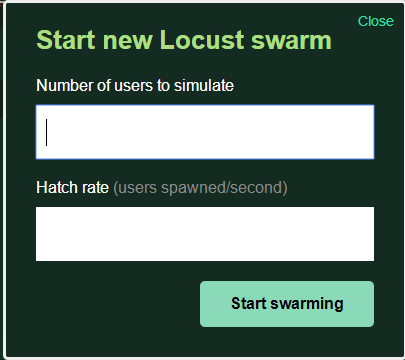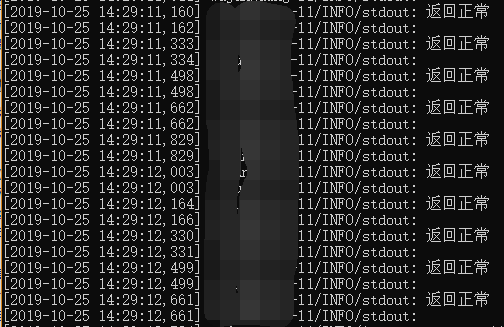背景:
测试过程中会有针对单接口及多接口的压测(典型场景为后台配置总量的抢券,抢完为止)
策略:
之前用的比较多的是使用Jmeter,通过设置线程数、RPS(每秒用户数)、循环次数进行接口压测,近期了解了locust,觉得比较新颖(python代码方式),接下来简单介绍下基于Python+locust的接口压测。
环境:
配置python环境;
配置locust-- pip install locustio;
测试代码:
from locust import HttpLocust, TaskSet, task import subprocess import json #abc # 性能测试任务类 TaskSet. class UserBehavior(TaskSet): # 开始 def on_start(self): pass # 任务 @task(1) def getTagVals(self): u""" request_url:请求路径 request_params:请求头参数 request_json:请求json参数 """ request_url = "/api/xxx/xxx" request_params = { "key": "tabs" } request_json = { "tagKey": 25 } response = self.client.post( url=request_url, params=request_params, json=request_json ) if response.status_code != 200: print (u"返回异常") print (u"请求返回状态码:"), response.status_code elif response.status_code == 200: print (u"返回正常") # 这里可以编写自己需要校验的返回内容 # content = json.loads(response.content)["content"] # if content["tagKey"] == 25: # print u"校验成功" # print json.dumps(content, encoding="UTF-8", ensure_ascii=False) # 性能测试配置 class MobileUserLocust(HttpLocust): u""" min_wait :用户执行任务之间等待时间的下界,单位:毫秒。 max_wait :用户执行任务之间等待时间的上界,单位:毫秒。 """ # weight = 3 task_set = UserBehavior host = "http://www.xxxx.com" min_wait = 3000 max_wait = 6000 if __name__ == "__main__": subprocess.Popen("locust -f main_pt.py", shell=True)
说明:需要注意的是,request_url为请求路径,request_params即入参,host为请求的host,接口为get方式或post方式则改动response=self.client.post对应值
步骤:
1、将代码保存为main_pt.py后,进入对应路径,执行:py main_pt.py
2、本地浏览器打开 http://localhost:8089
3、在弹出的框内输入相应参数,点击start开始。对应第一第二行分别为 模拟的用户总数 和 每秒钟并发的用户数量

4、描述

commond详情:

引自:https://www.cnblogs.com/cllovewxq/p/7692248.html